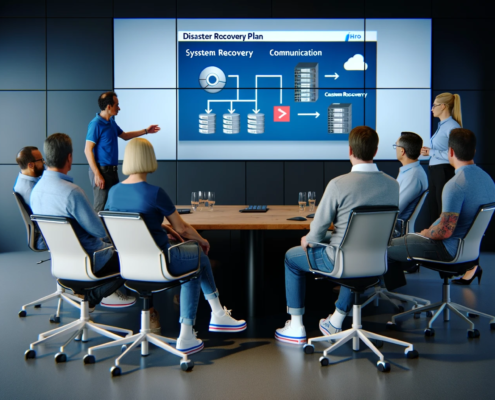
Designing a Disaster Recovery Plan: A Step-by-Step Guide for Business Leaders
Learn how to craft a disaster recovery plan with our step-by-step guide, including best practices and key components for business leaders.

Building a Resilient Disaster Recovery Strategy
Learn how to craft a robust disaster recovery plan that ensures your business can quickly bounce back from any disruption.

Maximizing ROI with a Virtual Chief Information Officer
Learn how vCIOs boost IT investment ROI through strategic, cost-effective solutions aligned with business goals.

Boosting Financial Performance: The Economic Advantages of Unified Communications
Explore how unified communications enhances efficiency, cuts costs, and boosts customer service, driving financial growth for businesses.

Comprehensive Guide to Backup and Disaster Recovery for Today's Businesses
Explore essential steps for effective backup and disaster recovery planning to safeguard your business data and maintain continuity.

Designing an Effective IVR System: Tips and Best Practices
Discover essential tips and best practices for designing an effective Interactive Voice Response (IVR) system to enhance customer interactions and satisfaction.

What is IVR? Enhancing Customer Service with Interactive Voice Response
Discover how Interactive Voice Response (IVR) can revolutionize your customer service, making it more efficient and responsive.

Securing VoIP: Best Practices for Protecting Voice Communications
Discover essential practices to secure your VoIP systems against cyber threats. Ensure safe and reliable voice communications for your business.

Choosing the Right VoIP Provider for Your Business Needs
Discover how to choose the right VoIP provider for your business. Compare features, pricing, and reliability to make an informed decision.

The Advantages of VoIP for Business Communication
Discover how VoIP transforms business communication with cost savings, flexibility, and superior call quality, catering to modern enterprise needs.
